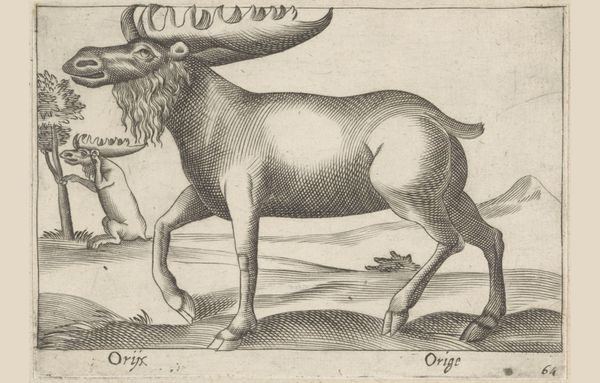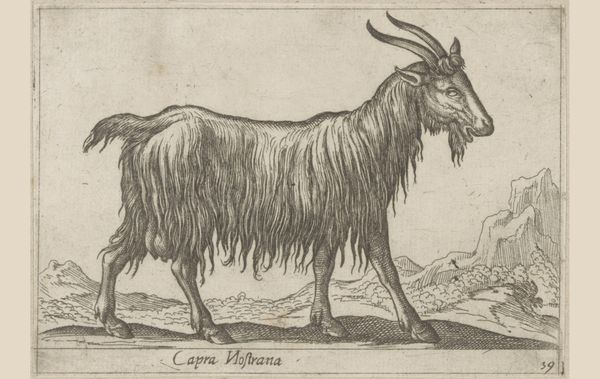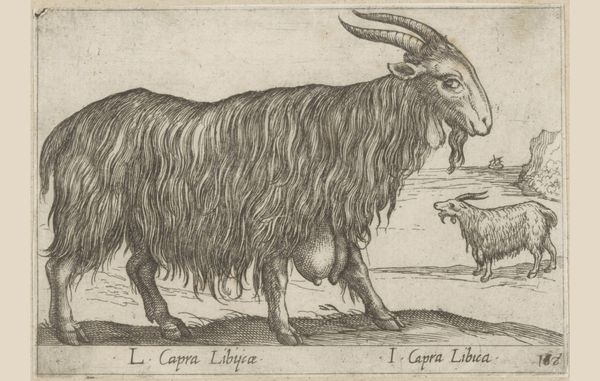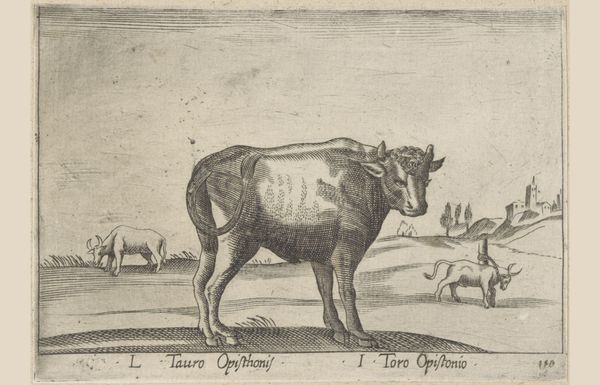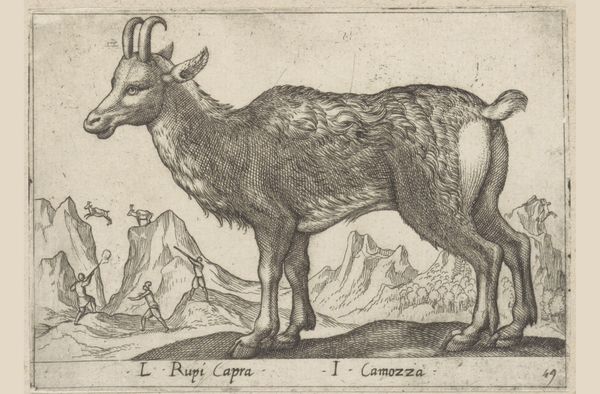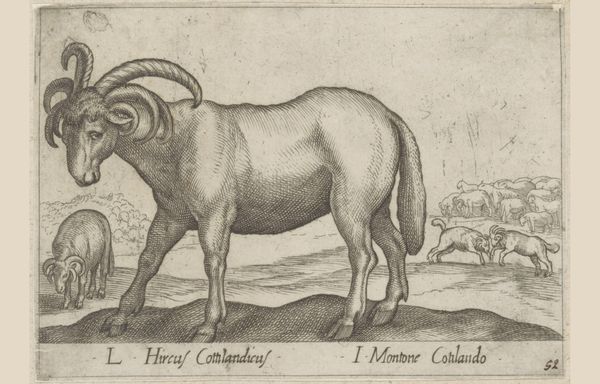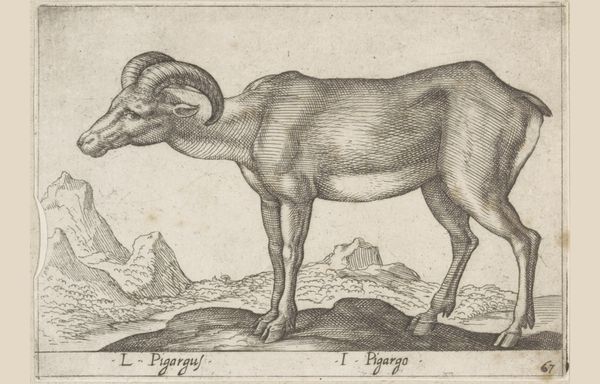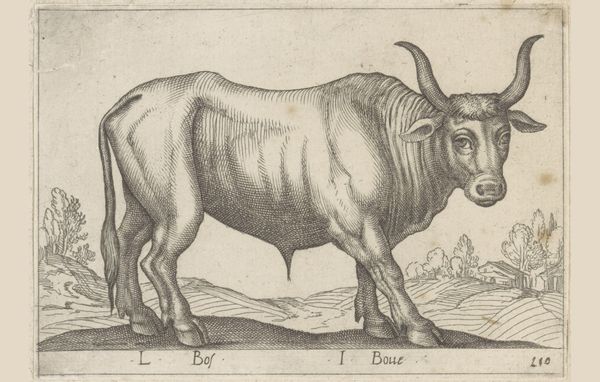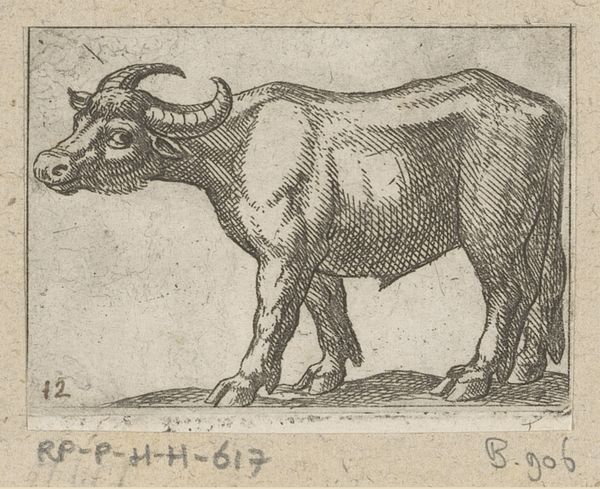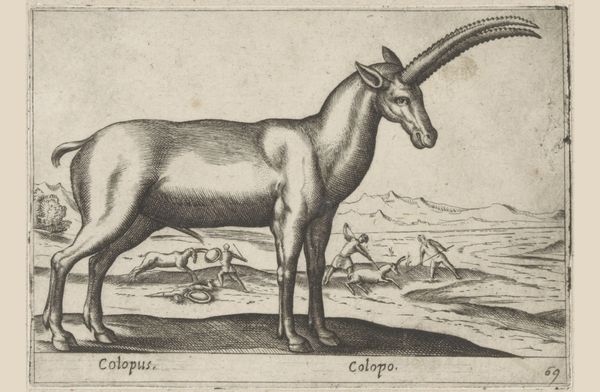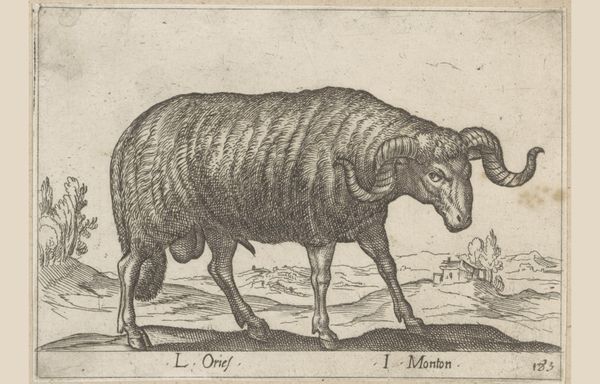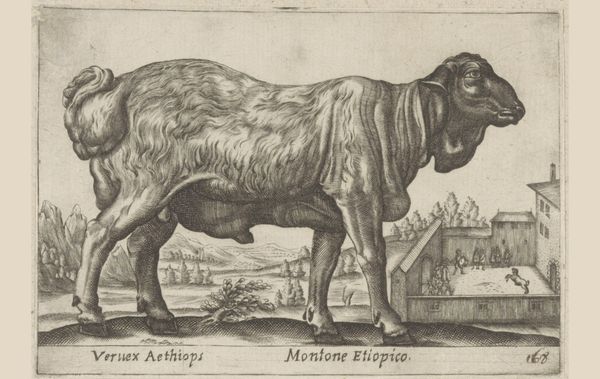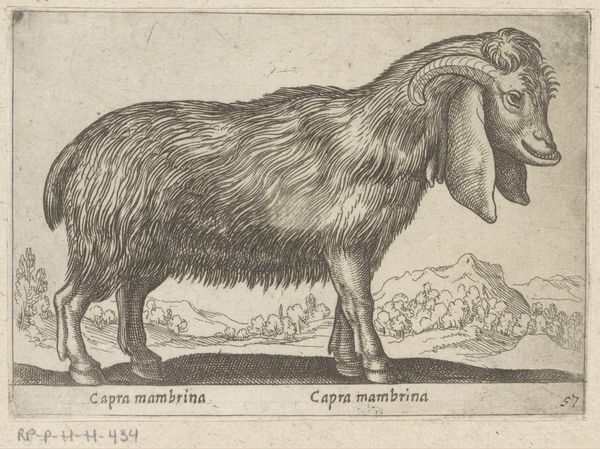
print, engraving
#
animal
# print
#
figuration
#
11_renaissance
#
engraving
#
realism
Dimensions: height 95 mm, width 137 mm
Copyright: Rijks Museum: Open Domain
Curator: Before you, we have “Mambrina geit” or “Mambrina goat”, a print created before 1650, likely an engraving by Antonio Tempesta. What's catching your eye? Editor: The sheer...starkness of the depiction. It’s this lone goat, so meticulously rendered with these hatched lines that really highlight the process. And look how the engraving almost makes it shimmer—like it’s a precious metal. Curator: I see what you mean, that detailed technique almost elevates this farm animal into an icon, like a symbolic emblem of the era's pastoral ideals. Goats, across many cultures, represent fertility and abundance, also stubbornness, it depends. Do you think it fits these notions? Editor: Well, the deliberate rendering hints at a connection with a patron’s agrarian interests. It emphasizes the economic value placed on livestock. It is a strange tension: celebrating agricultural production but rendered with techniques that usually convey wealth and status. Curator: That is a fine point. And if you examine its posture, there’s almost an uneasy humility in the droop of its head and ears, contrasting with the stark details around the udder and genitals which have an undeniable boldness in its rendering, suggesting natural strength. Editor: Agreed. And how many impressions of this image were made? How did that factor into the material impact this artist had? Think about the labor hours that are fossilized into this single piece. Curator: Considering Tempesta's known for dramatic battle scenes, turning his eye to something this quiet offers a subtle glimpse into daily life that we often miss. He captures its very essence using deceptively simple tools. Editor: It underscores the notion of value, then and now, of artistic and agricultural labour. This is not just an animal, but an object lesson of a certain world-view we are privileged to inspect through the art making process. Curator: So true, it makes me think more deeply about the roles goats have had through the ages and continue to play across diverse symbolic and practical purposes. Editor: I am now left wondering about who had access to these images. These are important avenues to probe the social underpinnings that led to their making in the first place.
Comments
No comments
Be the first to comment and join the conversation on the ultimate creative platform.
